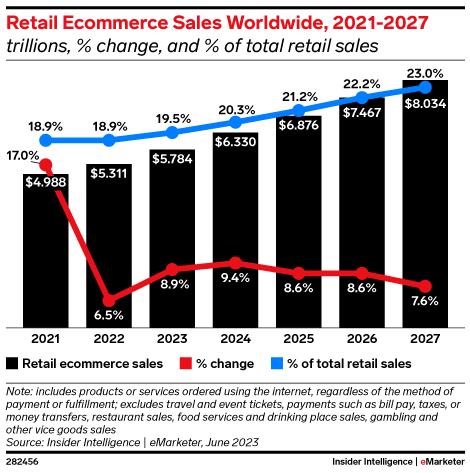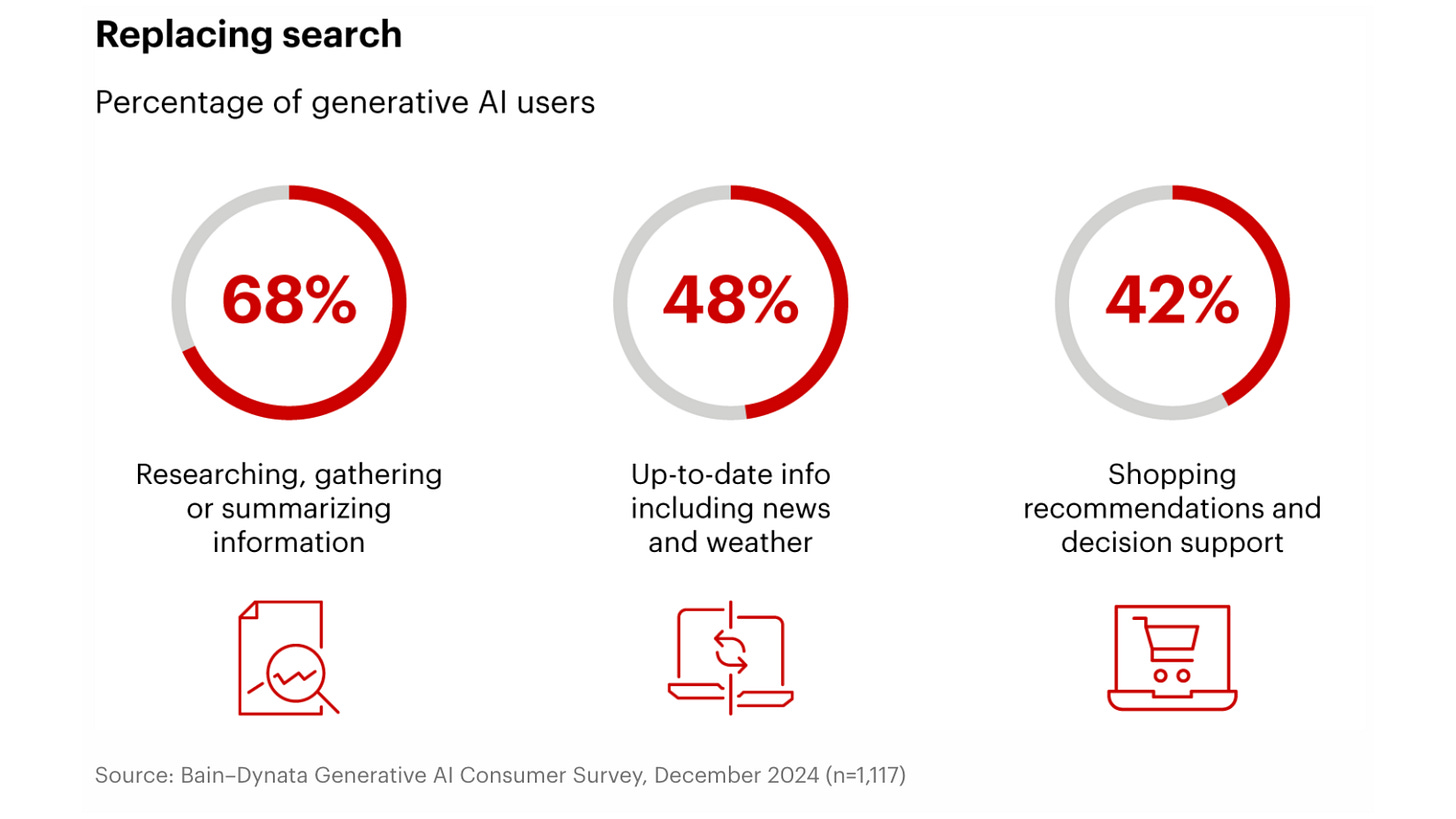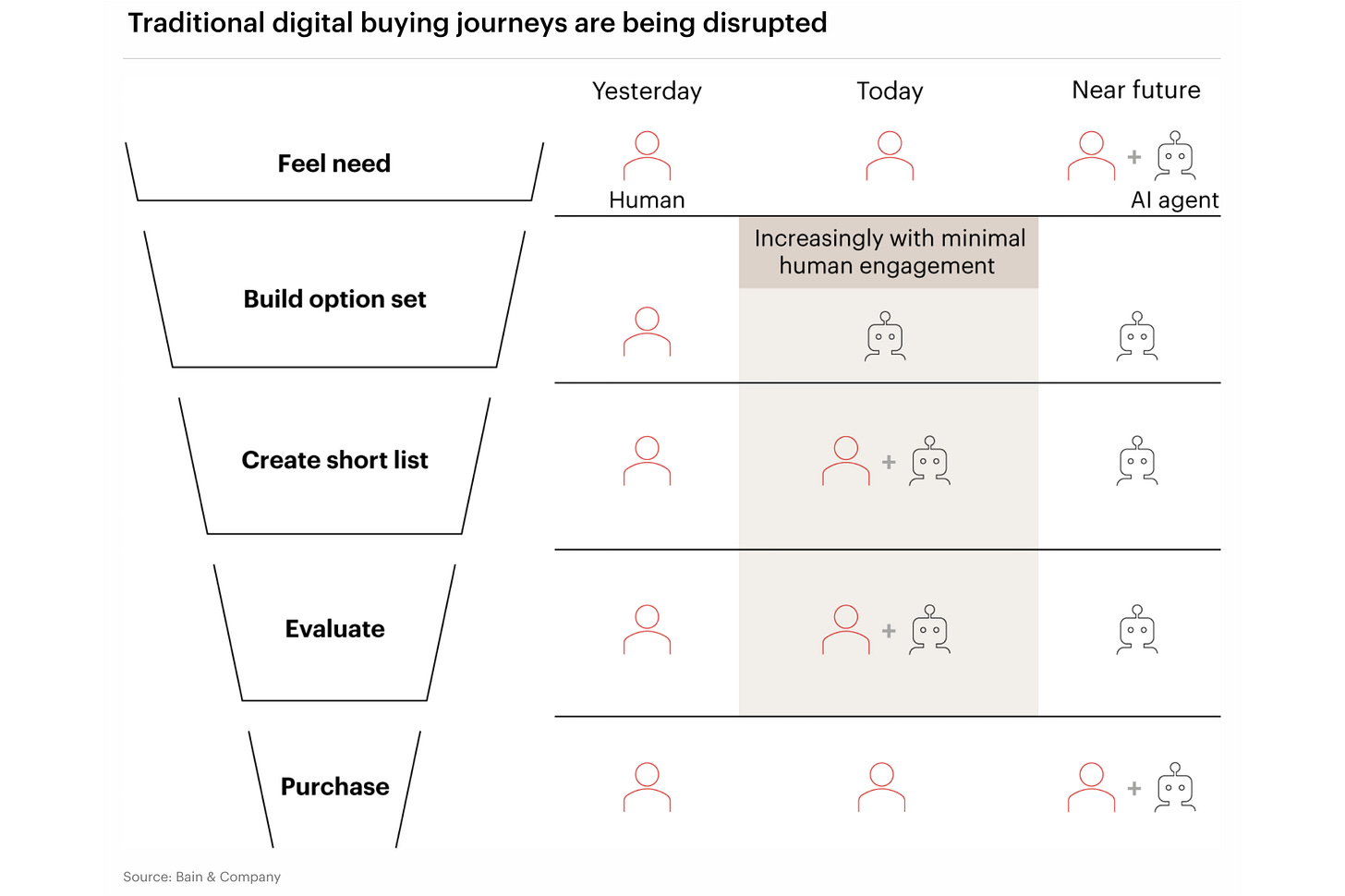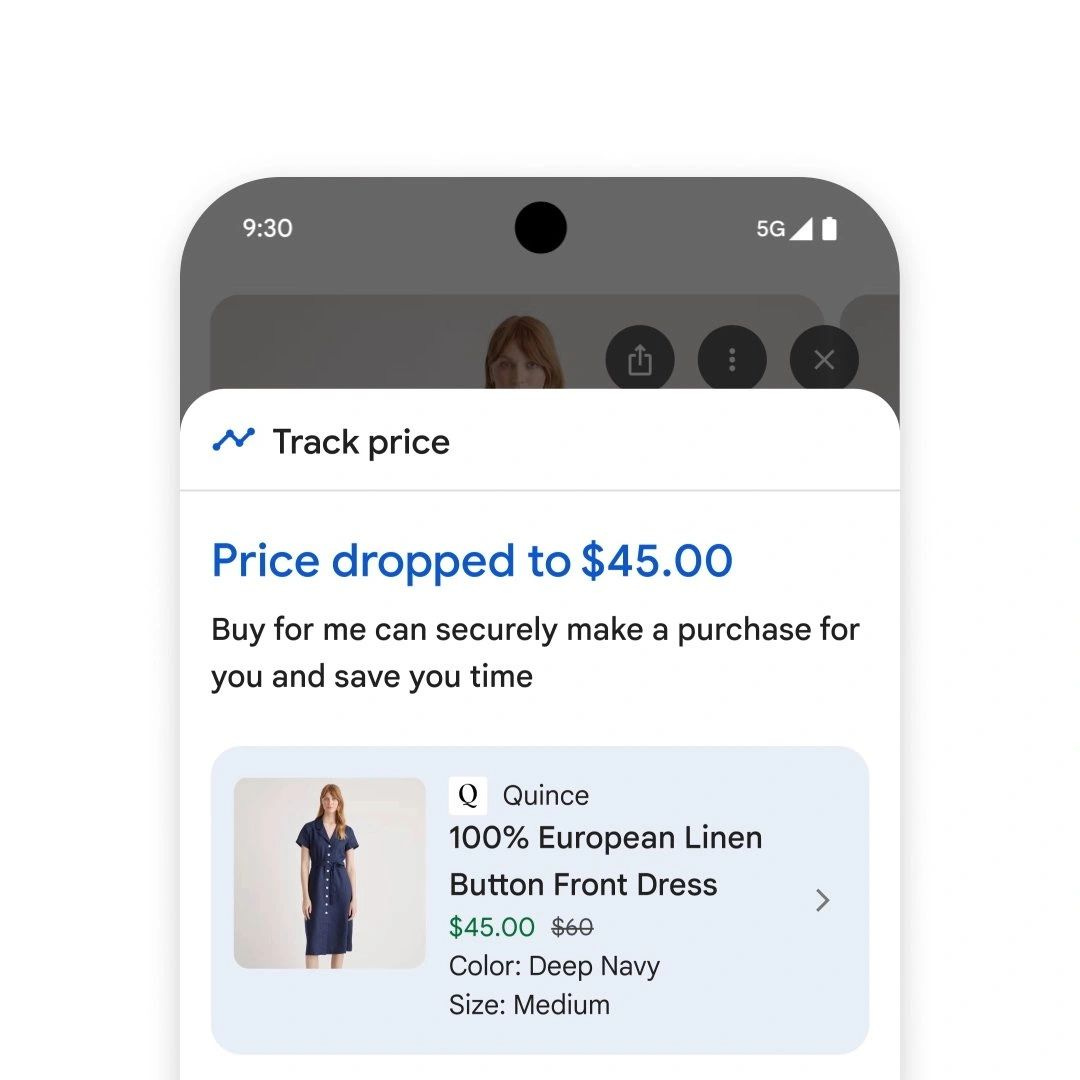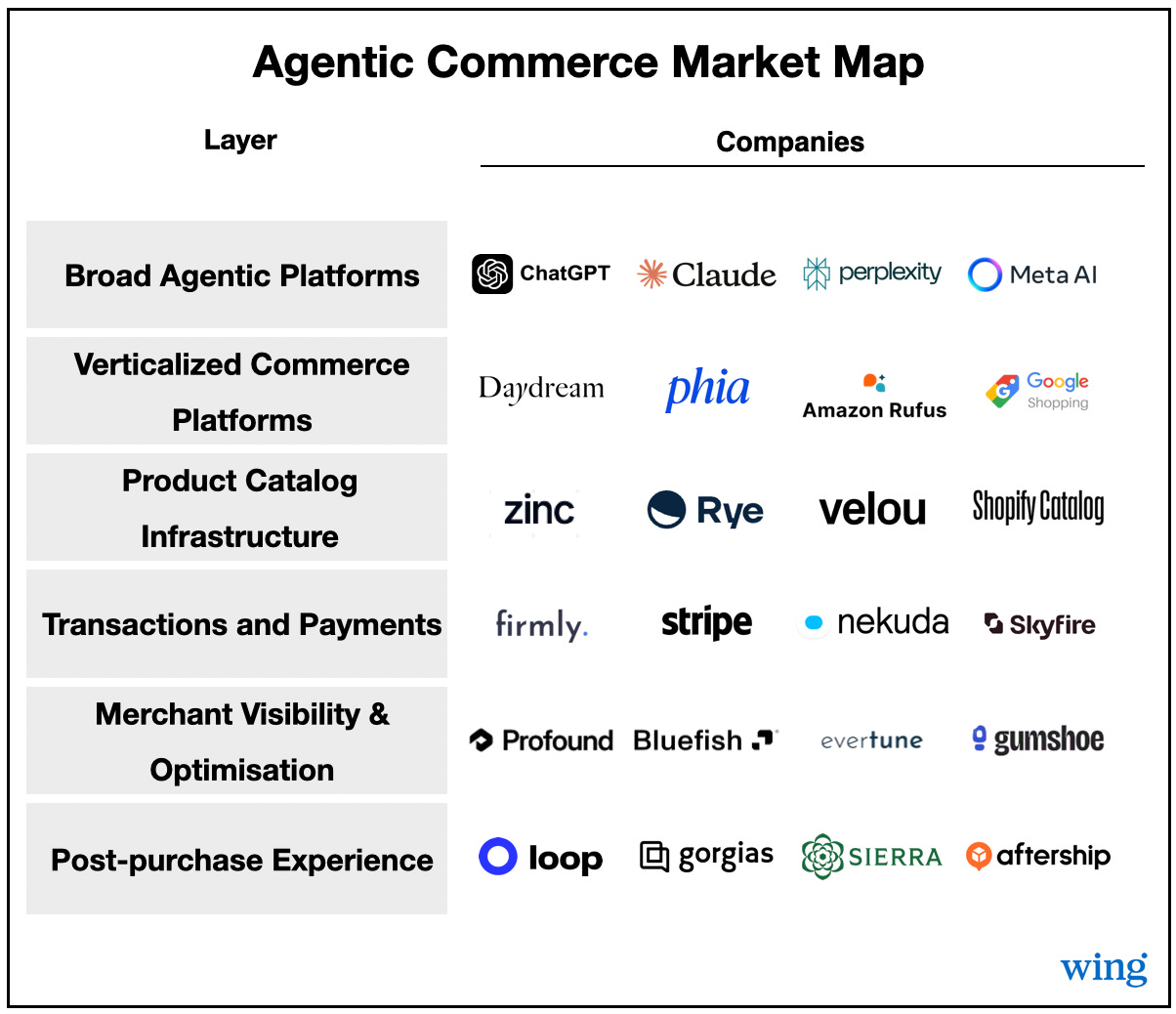Agentic Commerce is Coming: How AI Will Reshape Online Retail
Opportunities for companies as AI agents transform how we discover and purchase products
This is a weekly newsletter about the business of the technology industry. To receive Tanay’s Newsletter in your inbox, subscribe here for free:
Hi friends,
Last time, I wrote about how AI agents are accelerating adoption cycles for developer tools and choosing tech stacks. But agents will play a role in the distribution of much more than just software products. They’ll fundamentally change how all commerce is done over time, and today I want to explore that idea: agentic commerce.
I’ll cover:
What agentic commerce is
The current state of agentic commerce
Opportunities in agentic commerce
What is Agentic Commerce?
eCommerce already accounts for about 20% of all retail sales, representing nearly $6 trillion in transaction volume. Today, consumers research products across the web, consult friends and family, engage with social platforms, and browse retailer websites to discover and narrow down their options. They then complete purchases through marketplaces or online stores.
Over time, each part of this funnel has evolved. For example, 50% of consumers now start product searches on Amazon rather than Google. For Gen Z, discovery has shifted even further towards platforms like TikTok and Instagram.
Agentic commerce is the next step in that evolution. It extends this shift across the entire funnel, with AI agents rather than humans handling discovery, comparison, negotiation, and purchase.
Even today, consumers are already using tools like ChatGPT to research and narrow down product choices. And this is even before these tools had fully integrated memory, personalization, or been tailored for shopping experiences.
As these experiences mature, imagine asking your personal AI, “Find me running shoes under $120,” and instantly receiving tailored recommendations based on your past preferences and sizing. The agent identifies the best price, selects the right retailer, and completes the purchase with no further input required.
The graphic below outlines how this buying journey could evolve, as consumers increasingly rely on personal AI agents to discover, evaluate, and purchase products potentially over time even proactively, before the consumer even asks.
Current State of Agentic Commerce
As discussed above, consumers are already turning to AI products such as ChatGPT for product discovery (with 42% of users in the Bain survey indicating that they have used it for product discovery). But beyond that, we're seeing signs that the key platforms are going deeper into agentic commerce and taking this use case more seriously, even though agentic commerce is very much still in its infancy.
A. OpenAI Shopping
OpenAI announced a shopping initiative where users will see enriched product information for product related queries and see options to purchase the product. For now, users will still be redirected to the merchant’s website to complete the transaction.
B. Google Agentic Checkout
Google at I/O announced that the new AI mode of search will integrate their Shopping Graph (which has a catalog of 50B products) and allow for browsing and discovery of products. It will then also be able to use agentic checkout to buy the products on behalf of the consumer.
C. Perplexity Shopping
Perplexity improved their product discovery a few months ago with enriched listings and added support for a “Buy with Pro” feature for pro users for some SKUs where the checkout happens natively within perplexity.
Overall, these tools are just scratching the surface around product discovery and checkout given that most SKUs don’t support it, and the native experiences for discovery support only a subset of products and are still very much in their early stages.
If you don’t yet receive Tanay's newsletter in your email inbox, please join the 10,000+ subscribers who do:
Opportunities in Agentic Commerce
At a high level, I think of the agentic commerce stack as below, comprised of six key types of companies: broad agentic platforms and verticalised commerce platforms that provide consumer shopping experiences; and catalog infrastructure, transactions and payments, merchant tools, and post-purchase experiences that enable these experiences for merchants and consumers.
1. Broad Agentic Platforms
Broad agentic platforms will serve as the general-purpose entry point for consumers interacting with AI-driven shopping. These platforms aggregate consumer intent, handling diverse product requests across many categories. Their primary role is to translate user intent accurately into actionable shopping experiences. Over time, I expect these platforms push deeper into the commerce experience, potentially relying on 3rd parties or by creating standards that merchants will then adhere to given their scale. For example, Perplexity and OpenAI are experimenting with letting merchants directly submit detailed catalog data.
Examples: ChatGPT, Claude, Perplexity, Meta AI
2. Vertical Commerce Platforms
Vertical platforms that specialize in specific industries or product categories, offering deeper insights and more tailored shopping experiences for that vertical are likely to also emerge and play a role. These platforms will be commerce centric and leverage specialized data to provide better recommendations, detailed insights, and industry-specific expertise, significantly enhancing customer satisfaction and loyalty.
Examples: Amazon Rufus (1P Amazon products only), Google Shopping, Daydream, Phia (focus on comparison agents across new and secondhand), Onton (furniture/home decor oriented)
3. Product Catalog Infrastructure
Product catalog data, particularly in a form that can be read by agents is a critical part of the stack and ensures ensures accurate, structured, and real-time product information is available to agents. Better data when coupled with information about consumer preferences from the agent will allow for better discovery and recommendations as well as surfacing products actually in stock so that transactions can take place.
It remains to be seen whether the way this plays out is that providers that aggregate across merchants and sell to the agents emerge, or if the agent platforms create a standard and all merchants over time try to abide by that standard, offering an agent-ready version of their catalog/storefront.
Examples: Companies like Zinc, Rye, Velou, Shopify Catalog all offer agent-ready catalogs/APIs that can be consumed by agents.
4. Transactions and Payments
Historically, bots have been considered bad in payment and checkout flows since they indicate fraud. Now, with agentic commerce, agents that are given permission on behalf of users to purchase items for them means that not all bots are bad, and the checkout and payment flows need to adapt accordingly. In addition, agents need to be able to reliably navigate and checkout on stores, which today were not built for agents. So we’ll see some transactions and payments infrastructure that streamlines the checkout and purchasing process, enabling secure and efficient transactions initiated by AI agents.
Stripe has already demo’ed their Order Intents API as an example of this, and Visa has an entire initiative around intelligent commerce that touches on agentic payments.
Examples: Companies like Firmly, Stripe, Nekuda, Skyfire are all addressing various aspects of the checkout and payments flow.
5. Merchant Visibility & Optimisation
As AI agents increasingly mediate between brands and consumers, merchants require tools to optimize their visibility within AI-generated recommendations. This includes analytics and insights into how products are presented and ranked, helping brands effectively tailor their offerings to AI-driven discovery, as well as potential shifts in what the concept of a “storefront” optimised for AI agents mean. This goes beyond commerce and will be needed by all kinds of companies, but in commerce there may be additional needs around catalog and payments as touched on above.
Examples: Companies such as Profound, Bluefish, Evertune and Gumshoe are all building products to help merchants (and other kinds of companies) monitor and improve their visibility in AI engines.
6. Post-purchase Experience
If as you play it out fully ChatGPT and other agentic products are where people are making purchases, that's also where they'll go to facilitate returns or other kinds of customer support. For this reason, we'll probably see the need for post-purchase infrastructure to be made available to these agents to manage returns, customer service, track shipments and other tasks (given that that's where the consumer will be expecting to take these actions).
Examples: Companies such as Loop and Aftership support API-driven returns and shipping tracking which can be made available to AI agentic platforms. In addition, companies such as Gorgias and Sierra assist with support for merchants, and one can see them making their support available directly through the agentic platforms if that’s where consumer attention is (rather than through the merchant websites).
Closing Thoughts
Agentic commerce is rapidly approaching. Initial steps by major companies such as Google, Stripe, Visa, and OpenAI point towards substantial infrastructure growth. Yet, many critical components such as robust product data APIs, streamlined checkout experiences, vertical experiences, and visibility tools remain open opportunities for innovative founders.
We’ve optimized storefronts for human attention and clicks. But as AI agents take over the shopping journey, the question becomes: what does a storefront designed for machines look like?
If you’re building in and around the area or thinking about the area I'd love to hear from you. Please feel free to reach out to me on Tanay @ wing.vc.


